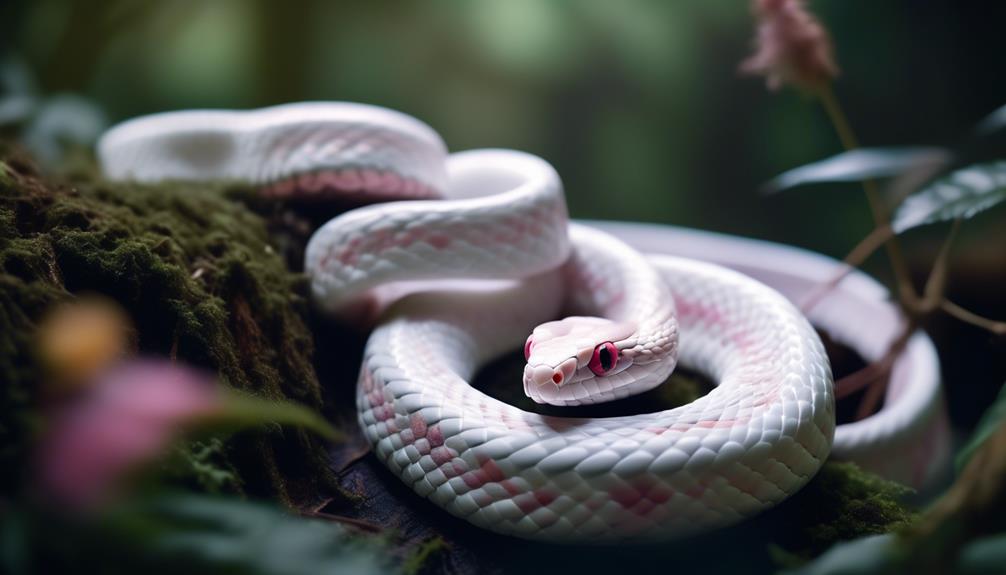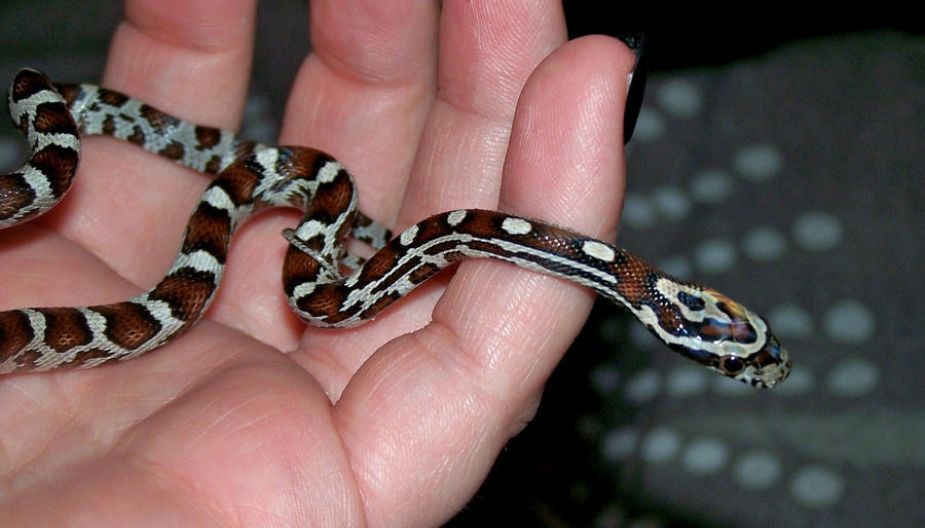So, you think you've seen it all when it comes to Corn Snakes, but have you truly explored the enigmatic world of the Reverse Okeetee? Its allure goes beyond just its name; the Reverse Okeetee boasts a mesmerizing blend of colors and patterns that set it apart from its counterparts.
As you explore into the intricacies of its distinctive coloration and genetic makeup, you'll uncover a fascinating tale of evolution and selection, leaving you entranced to uncover the secrets behind this alluring morph.
Key Takeaways
- Distinct coloration with lighter background and reduced saddle markings
- Selective breeding for pastel hues and unique physical traits
- Rarity and high value in the market for collectors
- Visually appealing twist on traditional Okeetee morph
Distinctive Coloration of Reverse Okeetee
The distinctive coloration of the Reverse Okeetee corn snake showcases a unique blend of lighter background hues and reduced saddle markings compared to traditional Okeetees. This variation in color gives the Reverse Okeetee a pastel and muted color palette, ranging from pale yellows to light oranges. The lighter background colors make the subtle markings on the snake stand out, creating a visually striking appearance that enchants enthusiasts.
Unlike the more common Okeetee corn snakes, the Reverse Okeetee displays a reversal or reduction in the typical saddle markings, emphasizing the paler tones that dominate its scales. This unique coloration is a result of selective breeding practices that aim to highlight these softer shades and create a distinct visual appeal in the snake. The overall effect is a corn snake that exudes a gentle yet captivating aura, drawing attention with its understated beauty and harmonious blend of colors.
Genetics Behind Reverse Okeetee Morph
Pivoting from the distinctive coloration of the Reverse Okeetee corn snake, the genetic basis behind this unique morph lies in specific breeding practices that manipulate key traits for visual impact. The Reverse Okeetee morph isn't just a random occurrence but rather a result of intentional breeding to bring out specific characteristics. Here's how the genetics behind the Reverse Okeetee morph work:
- Selective Breeding: Breeders carefully select parent snakes with desired traits to produce offspring with the Reverse Okeetee coloration and patterning.
- Genetic Combination: Through controlled breeding, specific genes are combined to achieve the striking contrast seen in Reverse Okeetees.
- Visual Effect: The ultimate goal of these breeding practices is to create corn snakes with a visually appealing appearance that stands out from traditional Okeetee corn snakes.
Unique Physical Characteristics of Reverse Okeetee
With a lighter background color and darker saddle markings, the unique physical characteristics of the Reverse Okeetee corn snake set it apart from traditional Okeetee morphs. This color inversion creates a distinct appearance that makes the Reverse Okeetee highly sought after by reptile enthusiasts and collectors.
The lighter background serves as a canvas that enhances the prominence of the darker saddle markings, creating a striking visual appeal. Compared to standard Okeetees, the Reverse Okeetee stands out due to its bolder and more contrasting colors, making it a fascinating variation in the world of corn snake morphs.
The precise patterning and coloration of the Reverse Okeetee contribute to its overall allure, thus those who appreciate the intricate beauty of reptiles. Whether for breeding projects or as pets, the unique physical characteristics of the Reverse Okeetee corn snake make it a prized addition to any collection.
Comparison With Other Corn Snake Morphs
When comparing the Reverse Okeetee corn snake morph to other variations in the corn snake family, notable distinctions in coloration and pattern become evident. This specific corn snake morph stands out due to its unique color pattern, where it features darker saddle markings against a lighter background, creating a visually appealing contrast that's rare among corn snake morphs.
Here are some key points to take into account when contrasting the Reverse Okeetee with other corn snake variations:
- The Reverse Okeetee showcases a reversal of the traditional Okeetee coloration, making it a sought-after choice for collectors interested in unique corn snake morphs.
- The striking contrast between the lighter background and the darker saddle markings sets the Reverse Okeetee apart from the classic Okeetee pattern.
- Due to its distinct appearance and rarity in the market, the Reverse Okeetee is highly valued by collectors looking for a corn snake morph that offers a visually appealing twist on the traditional Okeetee.
Breeding and Caring for Reverse Okeetee
Breeding and caring for the Reverse Okeetee corn snake involves selecting specific genetic traits to enhance its unique coloration and providing ideal habitat conditions to showcase its distinct pattern.
When breeding Reverse Okeetees, breeders focus on maintaining the purity of the genetic line to preserve the unique characteristics of this variation. By selecting for desired traits, such as the lighter background color and darker markings, breeders can enhance the vibrant colors that distinguish the Reverse Okeetee from other corn snake morphs.
Caring for these snakes includes ensuring they've proper habitat conditions that allow them to display their intricate saddle marks and unique color patterns. By creating an environment that mimics their natural habitat and meets their specific needs, enthusiasts can appreciate the beauty and individuality of the Reverse Okeetee corn snake.
Through careful breeding practices and attentive care, the distinct features of the Reverse Okeetee can be highlighted and celebrated.
Frequently Asked Questions
What Is Unique About Corn Snakes?
Corn snakes stand out due to their diverse color variations, behavior patterns, habitat preferences, and diet choices. Understanding their unique reproduction habits, size comparisons, and lifespan expectations helps dispel popular misconceptions, guiding conservation efforts for their health and preservation.
What Is the Difference Between a Reverse Okeetee and an Okeetee?
In comparing a Reverse Okeetee to an Okeetee, you'll notice distinct color variations due to genetic mutations. Breeders meticulously select for unique scale patterns, resulting in a striking contrast between light markings and dark base colors.
What Is the Most Unique Corn Snake?
The most unique corn snake is the Reverse Okeetee, distinguished by its striking pale background and dark reddish-brown saddles. This variation of the Okeetee morph showcases exceptional color contrast, making it a sought-after choice for collectors.
What Is an Extreme Reverse Okeetee Corn Snake?
The Extreme Reverse Okeetee corn snake showcases mesmerizing color variations with its vibrant red-orange saddle markings outlined by bold black borders. Breeders selectively developed this morph to enhance its striking appearance, making it a popular choice in the pet trade.
Conclusion
Thus, the Corn Snake Reverse Okeetee stands out for its distinctive coloration, unique physical characteristics, and genetic makeup.
With its vibrant hues, bold patterns, and distinct saddle marks, this designer snake offers a diverse range of options for collectors and enthusiasts.
By understanding the genetics behind this morph and providing proper care, breeders can continue to showcase the beauty and allure of the Reverse Okeetee in the herpetology community.
Evolve your collection with the captivating Reverse Okeetee morph.


